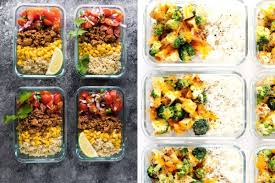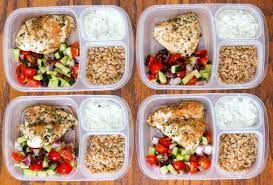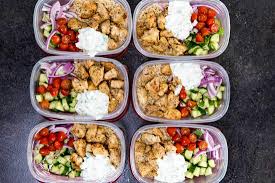A Quick Beginner’s Guide to Meal Prepping
Whether you’re working towards a healthier lifestyle or simply looking to cut down costs, planning your meals gives you more control over what you eat.
This lets you actively build a meal with the right amount of calories and nutrients instead of basing it around what’s easy and convenient – and the best part about it is that it doesn’t have to be as expensive as you would think.
Meal planning is great for everyone, but it works especially well for those who are on a tight schedule. Depending on how far you plan, you can save yourself the time and money from several days, and even up to a week.

To do that, these are the steps you need to follow:
1. Grab a meal-planning sheet or any sheet of paper.
Start jotting down your plans for meals by writing down the days of the week that you plan on preparing your meals for. If you find that a few days or so will be particularly hectic, plan meals that don’t take up too much time to make.
With meal prepping, you can also focus less on breakfast and lunch, and more on dinner, especially if you have a hectic schedule.
2. Take a look at your weekly schedule.
Ask yourself for any upcoming plans in the week, and then proceed to plan around that. You also don’t need to plan more than two weeks at a time, especially if you’re just starting out.
In fact, the simplest way you can start meal prepping is by doing so a few days at a time. This lets you find your rhythm and your schedule, and what kind of meals you enjoy best.

3. Choose meals that are easy to prepare.
Aside from taking up a lot of time, complex meals also use a lot of ingredients, and you’ll end up spending more for them. You should also look into the ingredients in terms of volume.
One advantage to meal prepping is that because you’re buying ingredients in bulk, you get to save more money than you would otherwise spend on eating out.
4. List the ingredients you need to prepare the meals on a separate sheet of paper.
This will be the grocery list you’ll be sticking to when you need to buy the ingredients for your meals. It also helps if you don’t throw your lists away, but save them instead for when you prep for more than one time.
And don’t forget to include the seasoning!

5. Prepare the containers needed for each meal.
Whether it’s simple plastic bags or full containers with a lid, the important thing is that it’s enough for the meal in question and that there’s enough space in your refrigerator.
If there aren’t enough small containers for every meal, you can simply place the food in one large container and take small portions out of it to reheat when you need it.
